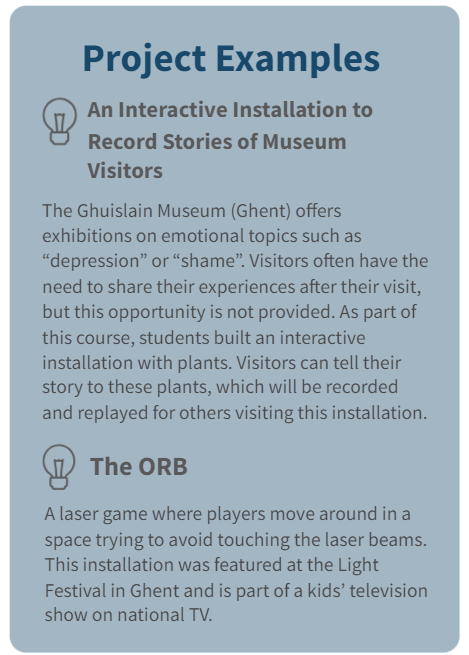3rd Position: 'Smart' products make smart solutions
Course Summary:
In the course Mechatronics (currently called Mechatronic Product Design), students in Industrial Design Engineering Technology designed a prototype of an interactive product using sensors, actuators and processors. The focus was on the integration of electronic components in products, with a strong emphasis on user interface. Students needed to complete a project based on a challenge, that they needed to deliver at the end of the semester. These challenges were linked to external partners (companies or organisations) who were searching for a solution via a smart product. The student was part of a team and needed to fulfil his/her role to realize the common project.
Course Design: 
For this course, the students had access to a safe environment to develop prototypes. This included access to Arduino’s, 3D printers, laser cutters etc. There was room to experiment and fail, and students were encouraged to develop an attitude that failures are equally instructive.
At the start of the course, students were introduced to the Scrum Framework and tools such as Miro and GitHub. These aided them in the collaboration process. After students had received their case, they developed their ideas in a brainstorm session and discuss these with the stakeholders. Here, students presented their 3 main ideas in a concept presentation and continued with exploring necessary technologies. On top of the materials already provided, a budget of 150 EUR per group was available for additional materials. At the end of the semester, the groups were expected to deliver a prototype, a presentation (8 min.), a movie (2 min.), a scientific poster and an article for popular media.
They were evaluated for 65% on the product, for 25% on the concept and presentations and for 10% on the poster and press article. Assessors utilized rubrics for the evaluation.
Each student chose two roles in the team: a management role and a technical role. They carried final responsibility for this role, but this did not mean they had to carry out these tasks alone. Students took on the following management roles: project manager, financial manager, communication manager, technical manager (embodiment) and technical manager (ICT). As a technical role, students could choose to be responsible for electronics, informatics, embodiment, user interface or user experience.
In the following video, you can watch designers of the course explain their motivations, processes and experiences of implementing the course.
Contact person
Prof. Jelle Saldien
